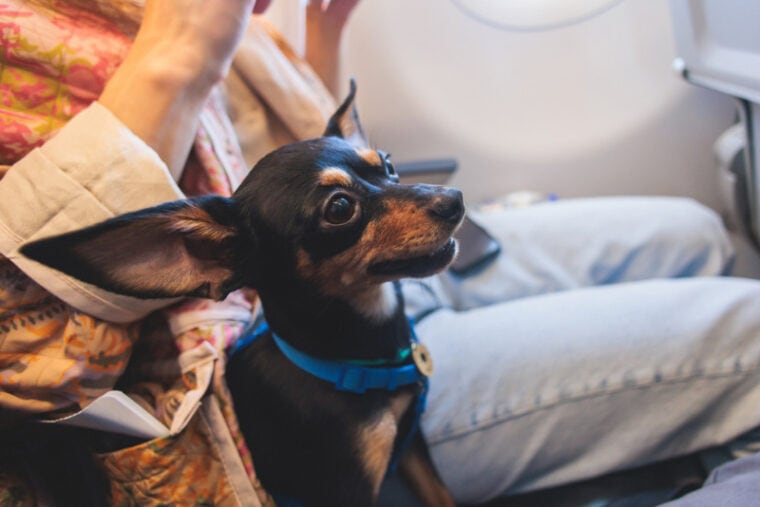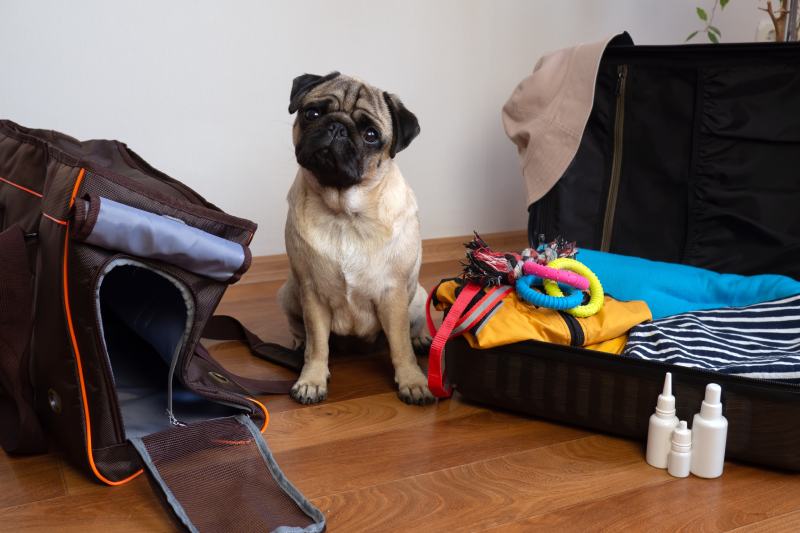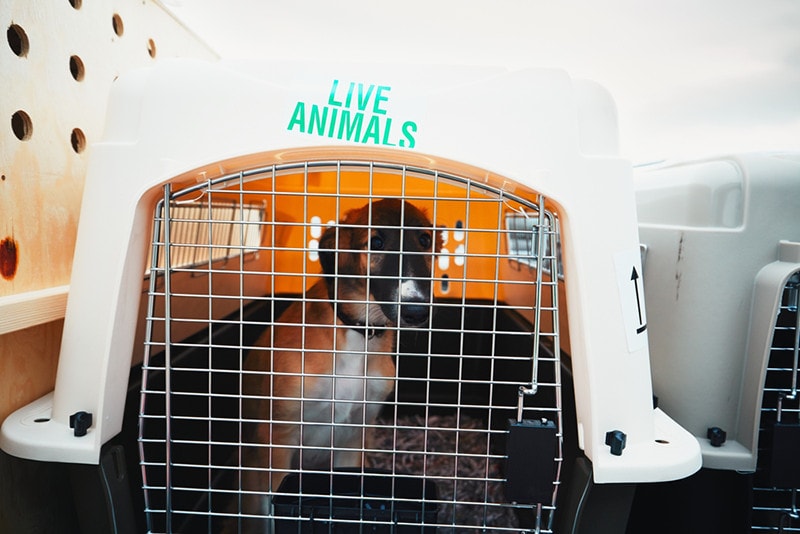
Some of the more onerous responsibilities of pet owners include the requirements involved to bring them with you on your international adventures. Flights can be very traumatic for some pets so please take into account their temperament and how much they really need to make the trip before you decide to put them on an airplane. For short-term holidays a pet sitter might be a nicer option for your pet. If you do decide to fly them, it can be difficult to nearly impossible to figure out exactly what you need to pack, what papers are needed, and all that bureaucratic drudgery. In the interest of simplifying the process, we’ve created a detailed guide for exactly how to travel internationally with your best furry friend in tow. Scroll down for the requirements and specific how-to instructions.
Before You Start
The first thing to research is your destination country. Every country has different and very specific requirements. For example, Australia has a minimum 10-day quarantine procedure for pets coming from the US. Countries that are free of certain diseases, such as Rabies, will require specific tests to ensure a new disease is not introduced into that country. Search for your destination countries requirements on the USDA website.1 The procedures to prepare your pet for international travel can take months to complete so you will need to ensure you have enough time in advance.
Specialist pet travel companies are available to help with the planning, paperwork and transportation of your beloved dog. This can be a really worthwhile investment and many veterinarians strongly recommend using a service of this kind to help.
Sadly, some countries have breed restrictions, with the most common being Pitbulls. At the time of this writing, many countries around the globe have restrictions in place on Pitbull ownership and may not allow the breed in the country from abroad at all. Again, this should come to light during the planning stage of your trip and might affect where you can travel with your dog.

Airlines may also have their own requirements, adding another layer of headache to planning your trip. You should check out the kennel requirements, cost, and any other rules for the airline you’re traveling with. Service dogs, however, are legally allowed to be brought into any commercial airplane by their disabled handlers. American airlines for example has a list of restricted breeds and will not transport animals that have been medically sedated or tranquilized.
Your next stop will be to your vet. It’s a good idea to do a general checkup before traveling with your dog so you can ensure they’re in healthy enough shape for the trip. Young puppies and senior dogs may not be well-behaved or healthy enough, respectively, to travel overseas. We strongly urge heeding your vet’s advice on assessing if your dog is in good enough shape to travel. The vet can also help you with mandatory testing. In many cases, you will have to visit with a US Department of Agriculture accredited veterinarian as part of a country’s entry requirements. You can search for USDA accredited veterinarians on their website.2
For a better idea of what you’ll need for your trip as a dog owner, check out our handy list just below. Tailor and adapt this as needed, depending on your destination and other changing needs.
The 3 Tips to Travel With a Dog Internationally
1. Pre-Trip Research
Before you book your flight, check both your destination country’s pet requirements for international travelers and the airline’s requirements. You’ll need your papers in order to avoid nasty surprises at the time of the trip. A week or two before your trip, you should head to the vet for a checkup and copies of vaccinations, if needed. If your dog needs a microchip or any other shots, this is also when to get that done.
When booking the flights take the comfort of your pet into account. Try to minimize the time in transit and the number of journeys for your pet. Try also to avoid exposing your pet to hot climates while traveling; if your destination is hot organize an evening flight.

2. Training Before Your Trip
In the weeks or months leading up to your trip, the most important things to work on with your dog are desensitization and socialization. Crate training is a must for your dog to safely and calmly travel, so we recommend making their crate a more welcoming place. Add toys, feed treats in the crate, and maybe add bedding if your dog won’t chew it up. Some dogs can’t have bedding, though, but you know your dog best. Never lock your dog in the early stages of crate training as this can be very distressing for them. Wait until they are happy and content in their crate before closing them in for short periods.
Desensitize your dog from the stressful traveling process by taking them on trips in the car to nearby pet stores or dog parks. Riding in the car will help acclimate them to the idea of behaving in rumbly moving vehicles, giving them the best chance of calmly making it through your flight. Reward calm behavior with treats and praise while ignoring whining or nuisance barking. Ideally, your dog should be well-trained by the time you leave. Consult with your veterinarian if your dog is not responding well to training.
3. The Day of Your Trip
Before your flight, take your dog on lots of potty breaks and feed them at least 4 hours ahead of the flight to minimize accidents in transit. It helps to wear them out at the dog park or with some vigorous playtime at home, which will leave them calmer and more relaxed for the trip.
For especially anxious dogs, there are over-the-counter calming treats or supplements that can help soothe them and make traveling stress-free.
For dogs traveling in the cargo hold, you may be able to leave a stuffed Kong or other favored treat in the crate to keep them occupied and stave off boredom. A shirt with your scent on it might help too. They need to toilet in their crate so place some absorbent material, such as puppy pads, down for them to go on. For small or toy dogs traveling with you in the cabin, check in on them frequently and offer some calming words and a pet if they appear distressed. Takeoff and landing are the most difficult times, so pay close attention during those phases.

Conclusion
Traveling abroad with a dog can be a hassle with many hoops to get through before arriving in your destination country. The most important steps are preparing for the trip itself, from your dull paperwork to training to keep your dog well-behaved and calm. If you’re careful to plan ahead, your trip will be as smooth as a trip to the dog park.
Featured Image Credit: Tsuguliev, Shutterstock








